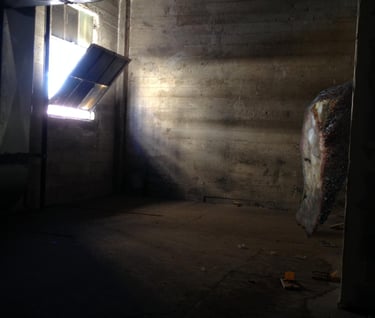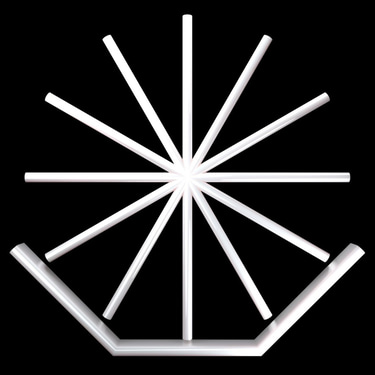Open Table: Peter Linden
Ian Webb
11/11/2013


As the final entry in our GRAPHITE Call For Entries Countdown, we bring our focus onto the artwork of Open – Table contributor Peter Linden.
Among the hardest tasks assigned to the viewer of art is the post-game description of their experience. Often expressed as an offhand “So, what did you think?”, understanding and describing personal interaction with art is often framed as both impossible and necessary. It is the question that everyone wants to know but no one wants to answer. In order to combat the ineffable nature of art experience, audiences often turn to the cliche and canned, art described as “taking one’s breath away.” Frequently expressed alongside pupil dilation or goosebumps, loss of breath intimates intense physical interaction (and in interaction, a form of understanding) without actually describing the components of that experience. It is for this very reason that the loss of breath in response to art has found such descriptive ubiquity. However, its ubiquity has come to undermine its actual function; in the perception of all art as “breathtaking,” few corners remain for it to effectively express such a sentiment without falling prey to cliche. And it is here where Peter Linden’s work enters.
Stranded Without Curtains (2012) consists of two curtain rods, one level, the other off-kilter, holding a single strand of hair suspended in mid-air. The strand is anonymous, as are the curtain rods. Somehow, their anonymity is made commonplace via their congregation; their intersection a semblance of the benign remnants of living, like flecks of toothpaste above the bathroom sink. But while their convergence may seem unforced, their physical interaction is not, for in the suspension of that hair, the anonymous is forced into the space of the other, creating constructed relationships that subvert the glazed narratives of chance encounter. Once anonymous, their forced interaction now creates a visual system of the whole. It is in this suspension of identity to the whole that the viewer enters, forced into understanding both the piece’s requisite parts and their submission to the system of the whole. Furthermore, the physical fragility of this relationship creates both intimacy and disjoint, inviting the eye in even as it divests interaction with its objects. In this sense, the entire piece and its experience acts as the intrusion of suspended moments, the “loss of breath” made manifest. In it, anonymous objects are breathed in, reconfigured, and held in fragile stasis, left to be seen but never changed — hanging by a single thread.
n his new work for GRAPHITE’s Open – Table, Down Light Tide, Linden seeks to find new corners of intimacy for his specific brand of quiet eruptions. Eruptions that will take over a forgotten space in the abandoned Chili’s the event calls its home. Linden’s preview for the space and piece encodes those moments of eruption:
“I waited for months. I would pace for hours trying to exit without leaving. I found that forgetting is the key to being content. Knowing the more visible you are, the more transparent you become. I sat in the dark and tried to figure nothing out. I wanted to hire someone to think about the differences between doing and being. I had lucid dreams of silence. I would fly to a point in the dream-space where nothing could be seen. It was a view to remember. Something of nothing remained.”
Down Light Tide will be on view as part of GRAPHITE’s Open — Table today, November 10 at the ReSTORE LA Space (1056 Westwood Boulevard) in Los Angeles from 2-4pm. For more information on how to submit your original content on the theme of “Networks” for consideration in GRAPHITE’s fifth issue, visit the “Contribute” tab on our website.
